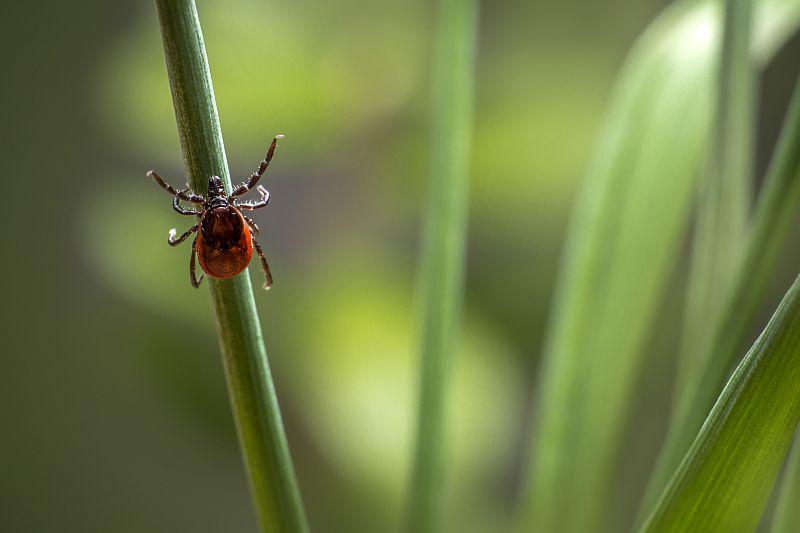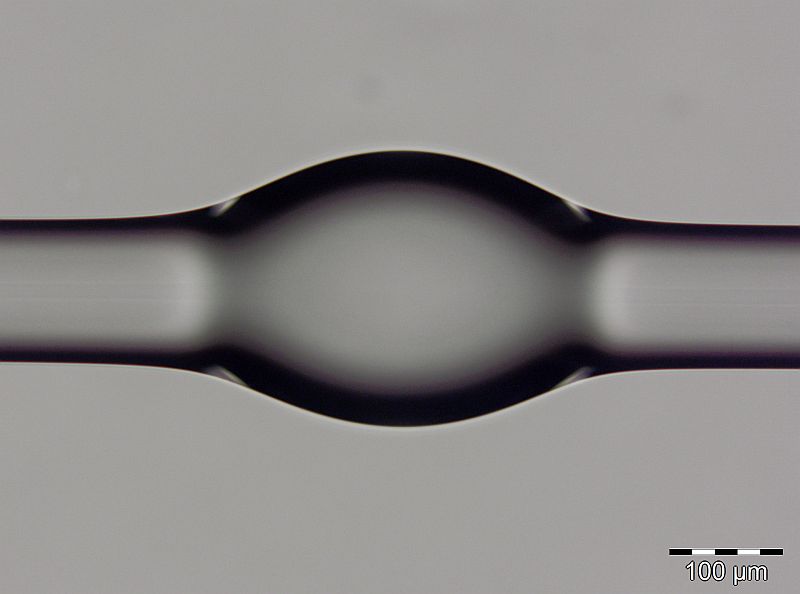PoC-BoSens Project
Optical biosensors for early-stage infection diagnostics
The translational PoC-BoSens project is committed to developing a medical diagnostics system based on optical microsensors, integrated with the expertise of the Fraunhofer Institute for Reliability and Microintegration IZM.
Lyme borreliosis is the most common disease spread by tick bites in Germany. The disease is prone to lead to serious complications unless it is detected and treated as soon as possible. Current diagnostic methods work, but offer no reliable early detections.
The PoC-BoSens project develops a wearable and highly sensitive diagnostics system that uses optical microsensors to identify Lyme borreliosis disease early and reliably. The sensor works by detecting a special biomarker that occurs in the human body in the case of a bacterial infection.
As a world first, the project combines a micro-fluidic system with bottle microresonators, a very appealing choice for sensoric purposes because of their high sensitivity, easy integration, and miniature size. The project’s coordinator Dr. Alethea Vanessa Zamora Gómez at the Fraunhofer IZM explains: “The technological backbone of the project is our use of bottle microresonators as sensors. They are an excellent choice for a multi-channel detection of our target molecules.”
The project brings together an international consortium of photonics, micro-fluidics, biochemistry, electronics, and biomedical researchers, with a strong German contingent made up of the Fraunhofer Institute for Reliability and Microintegration IZM, Diarect AG, Scienion AG, MDX Devices GmbH, and IfU Diagnostics Systems GmbH.
The German Ministry of Education and Research is supporting PoC-BoSens as part of the translational funding campaign “Photonics Based Sensing ERA-NET Cofund (PhotonicSensing)”. With a volume of approx. €2.4 million, the project is planned to run from 1 April 2018 to 31 December 2021.
About PoC-BoSens
- PoC-BoSens project brief:
https://www.photonikforschung.de/projekte/europa-und-internationales/projekt/poc-bosens.html - Photonics Bases Sensing ERA-NET Cofund support:
https://www.photonikforschung.de/projekte/europa-und-internationales/foerdermassnahme - Project website:
http://www.poc-bosens.researchproject.at/index.php
Last modified:
 Fraunhofer Institute for Reliability and Microintegration IZM
Fraunhofer Institute for Reliability and Microintegration IZM
